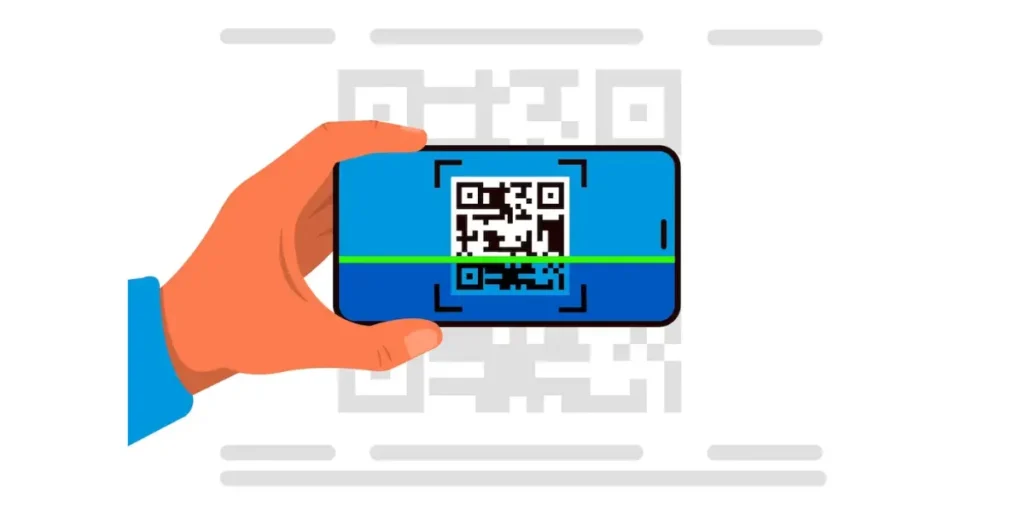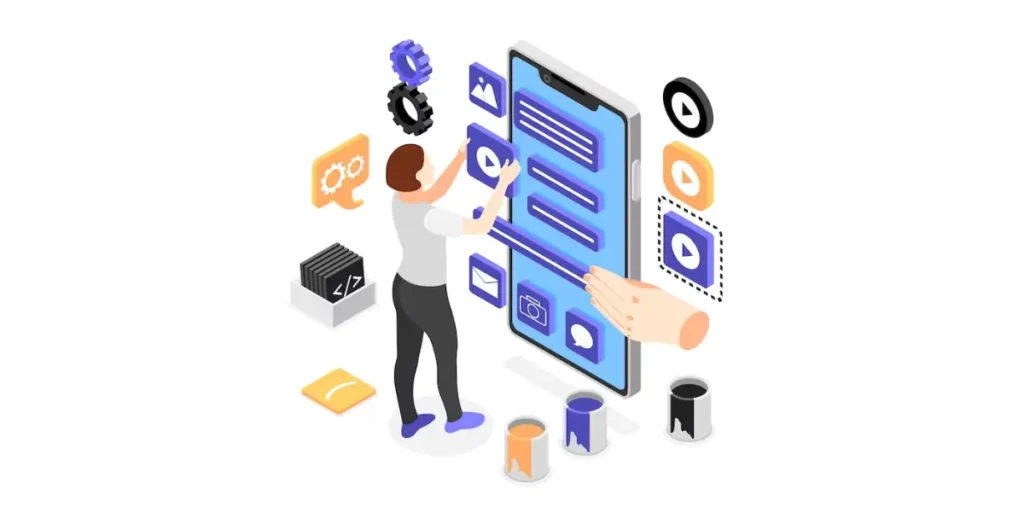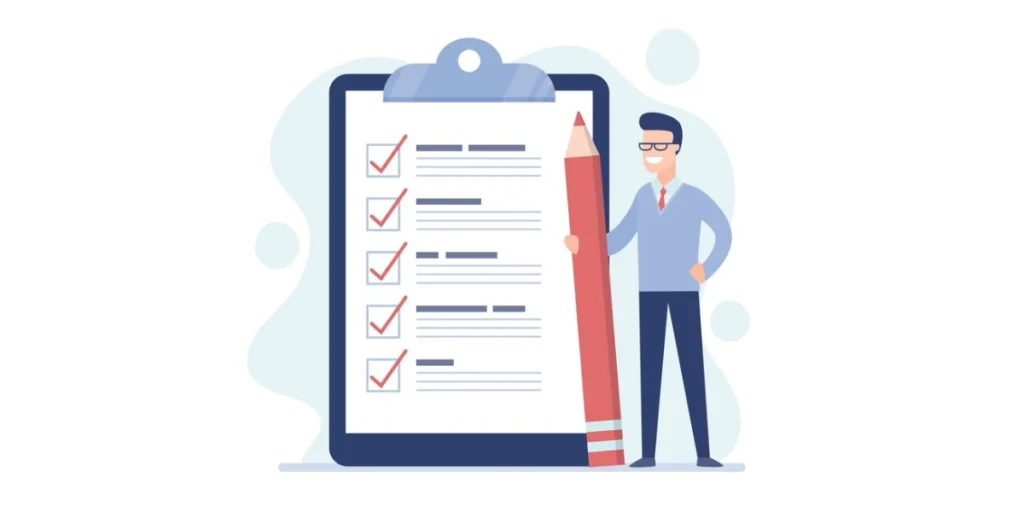In today’s world, information is exchanged at lightning speed. Safeguarding sensitive data from cyber threats has become more important than ever.
Have you ever scanned a QR Code only to find out it’s locked? That’s an encrypted QR Code in action!
These QR Codes are different from regular ones. They keep the data hidden and unlock it only when you enter the right password or use the right key.
These codes combine convenience and security and offer a robust solution to protect data.
So, what exactly are encrypted QR Codes? Keep reading to know more!
A. What is an encrypted QR Code?

An encrypted QR Code is a QR Code that has been encrypted using a cryptographic algorithm.
This makes the information inside the QR Code unreadable to anyone. The only way to access this information is through a decryption key.
Encrypted QR Codes are often used to store sensitive information. These could be passwords, credit card numbers, or medical records.
Did you know that in 2025, QR Code adoption has grown by 43% compared to 2022?
Encrypted QR Codes use special technology to keep data hidden. Here’s how they work:
- Data is encrypted: The data inside the QR Code is protected using a password or encryption method.
- User scans the QR Code: People scan the code with their phone.
- Authentication is needed: They must use a password or passkey or use a special app to unlock the data.
- Data is revealed: They can see the information if they have the right key.
B. How to create an encrypted QR Code?

Generating and scanning encrypted QR Codes requires encryption algorithms, encoding techniques, and compatible scanning tools.
Here’s a general overview of the process:
Step 1. Generating an encrypted QR Code
1. Choose an encryption algorithm: First, select a secure encryption algorithm such as AES (Advanced Encryption Standard) or RSA (Rivest-Shamir-Adleman).
2. Encrypt the data: Then, use the chosen encryption algorithm to encrypt the desired data, such as a text message, URL, or any other information.
3. Convert the encrypted data to a QR Code: Next, encode the encrypted data into a QR Code format.
There are various libraries and online tools available for this purpose. You can use Python libraries like QR Code or external online services that provide QR Code generation with custom data.
Step 2. Scanning and Decrypting the Encrypted QR Code
1. Get a QR Code scanner: Install a QR Code scanning application (such as Google Lens) on your smartphone or use a dedicated QR Code scanner.
2. Scan the encrypted QR Code: Open the QR Code scanning application and use the camera to scan the encrypted QR Code.
3. Retrieve the encrypted data: The scanning application will recognize the QR Code and extract the encrypted data embedded within it.
4. Decrypt the data: Use the appropriate decryption algorithm and the corresponding decryption key to decrypt the extracted encrypted data.
If you’re using RSA encryption, the private key will be required for decryption. If you’re using symmetric encryption like AES, the same key used for encryption will be used for decryption.
5. Process the decrypted data: Once the encrypted data is decrypted, you can use it for further processing, such as displaying the decrypted message or redirecting it to a decrypted URL.
Encryption and decryption security depend on strong algorithms and secure key protection.
Pro Tip: Always use trusted and secure scanning applications or devices to avoid potential risks and follow best practices for encryption, key management, and secure communication to ensure data confidentiality and integrity.
C. Who can use an encrypted QR Code?
1. Businesses and brands
If you’re a business owner or a brand manager, encrypted QR Codes are your new best friend.
They can secure customer data, provide exclusive content, and add an extra layer of security to your transactions.
Imagine offering your VIP customers a secret discount or exclusive event access through an encrypted QR Code. It’s all about creating that unique experience and building trust.
2. Healthcare professionals
Patient confidentiality is crucial. Encrypted QR Codes ensure that medical records and personal information stay secure.
They’re especially useful in contexts like diagnostic labs and patient portals, where secure data exchange is essential.
It’s a game-changer for simplifying patient check-ins and securely sharing health records.
3. Event organizers
Running an event? Use encrypted QR Codes for ticketing.
It prevents counterfeit tickets and ensures that only the right people gain access. Plus, it makes the check-in process a breeze.
4. Educational institutions
Schools and universities can use encrypted QR Codes to securely share exam results, personal student information, and educational materials.
It’s all about protecting student privacy while making information easily accessible.
5. Government agencies
With the growing concern over data security, government agencies can utilize encrypted QR Codes for secure document sharing, citizen ID verification, and confidential communication.
It’s all about keeping sensitive information out of the wrong hands.
6. Financial services
Banks and financial institutions can use encrypted QR Codes for secure transactions, customer account access, and private communication.
It’s all about enhancing security and trust in a sector where it’s paramount.
7. Consumers
Yes, even the everyday smartphone user can benefit. Securely share personal information, access private files, or ensure that your sensitive data remains safe during transactions. Peace of mind in the palm of your hand.
D. Reasons to use an encrypted QR Code
Alright, let’s dive into why you should be using encrypted QR Codes. Here’s the lowdown on the top reasons:
1. Enhanced security
Encrypted QR Codes add an extra layer of protection against unauthorized access.
Whether it’s customer data, transaction details, or personal information, encryption ensures that only the intended recipient can access the content.
This is crucial in an age where data breaches are all too common.
2. Data Privacy
With increasing concerns over privacy, encrypted QR Codes help safeguard sensitive information.
They’re especially useful for industries that handle personal data, such as healthcare, finance, and education, ensuring that information remains confidential and compliant with privacy regulations.
3. Prevent counterfeiting
For event organizers and businesses, encrypted QR Codes can prevent ticket fraud and counterfeit products.
By securing QR Codes, you ensure that only valid and authentic codes are recognized, protecting your brand and your customers.
4. Confidential communication
Encrypted QR Codes are perfect for sending private messages or confidential information.
Whether it’s business communication, medical records, or personal messages, encryption keeps your information secure from prying eyes.
5. Secure transactions
In the financial sector, encrypted QR Codes can be used for secure transactions.
They help in verifying the authenticity of payment requests and ensure that transaction details are not intercepted or altered.
6. Exclusive access
Want to offer VIP access or exclusive content to your customers? Encrypted QR Codes ensure that only those with the decryption key can access the special offers, making your promotions more enticing and secure.
7. Compliance with regulations
For industries bound by strict data protection laws, such as GDPR or HIPAA, encrypted QR Codes help ensure compliance.
They provide a secure method for handling and transmitting sensitive information, reducing the risk of non-compliance penalties.
8. Peace of mind
For both businesses and consumers, encrypted QR Codes provide peace of mind.
Knowing that sensitive information is protected against unauthorized access builds trust and confidence in your brand or service.
9. Easy to implement
Adding encryption to QR Codes is relatively simple with the right tools and platforms. It’s a small step that offers significant security benefits without complicating the user experience.
10. Versatility
Encrypted QR Codes can be used in various applications—from secure logins and authentication processes to safeguarding personal information on IDs and membership cards. Their versatility makes them a valuable tool across multiple industries.
Brands that trust us:

E. Where to use an encrypted QR Code
Hey there! Wondering where you can put those encrypted QR Codes to good use? Here’s a breakdown of prime spots and scenarios where they can make a real impact:
1. Retail and e-commerce
Use encrypted QR Codes on product packaging to share detailed product information, verify authenticity, and offer exclusive discounts.
They can also be used for secure customer loyalty programs, ensuring only legitimate customers can access rewards.
2. Healthcare
Place encrypted QR Codes on patient wristbands, medical records, and prescription labels to ensure that sensitive health information is accessible only to authorized personnel.
This enhances patient privacy and streamlines secure data sharing between healthcare providers.
3. Event management
Implement encrypted QR Codes on tickets to prevent counterfeiting and streamline the check-in process.
Only verified attendees can gain entry, enhancing security at concerts, conferences, and other large gatherings.
4. Education
Educational institutions can use encrypted QR Codes on student ID cards, report cards, and certificates to protect student information and verify credentials. T
hey can also secure access to digital learning materials and exams.
5. Financial services
Banks and financial institutions can utilize encrypted QR Codes for secure banking transactions, customer account verification, and secure access to financial statements. This helps prevent fraud and unauthorized access.
6. Government and legal documents
Encrypted QR Codes can secure personal information on IDs, passports, and official documents.
They protect sensitive information, reducing the risk of identity theft and unauthorized data access.
7. Corporate communications
Use encrypted QR Codes in internal communications to securely share sensitive information, such as business plans, financial reports, and confidential documents. This ensures that only intended recipients can access the data.
8. Transportation and travel
Place encrypted QR Codes on boarding passes and travel documents to enhance security and streamline the verification process.
They can also be used for secure luggage tracking and accessing travel itineraries.
9. Real estate
Real estate agencies can use encrypted QR Codes on property listings to provide secure access to detailed information, virtual tours, and confidential documents, ensuring that only serious buyers can access sensitive data.
10. Personal use
Individuals can use encrypted QR Codes to share private information securely, such as contact details, Wi-Fi passwords, or personal documents.
It’s a convenient way to keep your data protected.
11. Access control
Implement encrypted QR Codes for secure entry into buildings, offices, or restricted areas.
Only authorized individuals with the decryption key can gain access, enhancing security.
12. Customer service
Companies can use encrypted QR Codes in customer service interactions to securely share troubleshooting steps, account information, or other sensitive details, ensuring customer data remains protected.
What our customers say about us:

F. When to use an encrypted QR Code?
Knowing when to use encrypted QR Codes can maximize their benefits and ensure your data remains secure.
Here’s when you should consider implementing them:
1. Handling sensitive information
Anytime you’re sharing personal, financial, or confidential information. This includes medical records, banking details, legal documents, and personal identification.
2. Online and offline transactions
For secure payment processes in both e-commerce and physical retail. Encrypted QR Codes help prevent fraud by ensuring transaction details are kept confidential.
3. Exclusive access and offers
When providing VIP or exclusive content, discounts, or event access. Ensuring only authorized individuals can redeem these offers enhances security and customer satisfaction.
4. Event ticketing
During events to prevent ticket fraud. Use encrypted QR Codes on tickets to ensure that only valid ticket holders gain entry.
5. Internal communications
You can use them to share sensitive internal documents and communications within an organization.
Encrypted QR Codes ensure that only intended recipients can access the information.
6. Educational records
When distributing student information, exam results, or educational certificates. Encryption protects student privacy and ensures authenticity.
7. Healthcare settings
For patient information, prescriptions, and medical records. Encrypted QR Codes safeguard patient data, ensuring it’s accessible only to authorized healthcare professionals.
8. Customer loyalty programs
In customer loyalty programs, you can use them to securely manage and verify points or rewards. This prevents unauthorized access and fraud.
9. Government services
When dealing with official documents, IDs, and legal documents. Encrypted QR Codes help protect personal information and verify document authenticity.
10. Travel and transportation
For secure boarding passes, travel itineraries, and luggage tracking. Encrypted QRs enhance security and streamline the verification process.
11. Access control
For secure entry to buildings, offices, or restricted areas. Ensuring that only authorized individuals can gain access enhances security protocols.
12. Product authenticity
When verifying the authenticity of products. Encrypted QR Codes on packaging help consumers confirm that they’re purchasing genuine items.
13. Secure sharing of personal information
Anytime you need to share sensitive personal data, like contact details, Wi-Fi passwords, or private messages. Encrypted QRs ensure this information stays secure.
14. Financial services
When handling sensitive financial information and transactions. Encrypted QRs protect against fraud and unauthorized access.


G. Best practices

Here are some best practices to ensure you’re getting the most out of encrypted QR Codes:
1. Choose a strong encryption method
Use robust encryption standards like AES (Advanced Encryption Standard) to protect your QR Codes. Strong encryption algorithms provide a higher level of security.
2. Keep your encryption keys secure
The security of your encrypted QR Codes relies on the protection of your encryption keys.
Store keys securely, use hardware security modules (HSMs), and regularly rotate keys to minimize the risk of unauthorized access.
3. Use short expiry times for sensitive data
For highly sensitive information, set short expiry times on your QR Codes. This limits the window of opportunity for any potential misuse if the code were to be intercepted.
4. Educate your users
Make sure users understand the importance of the encrypted QR Code and how to use it properly. Provide clear instructions on how to scan and decrypt the QR Code safely.
5. Implement multi-factor authentication (MFA)
For additional security, combine encrypted QR Codes with MFA. This adds another layer of verification, making it even harder for unauthorized individuals to access the encrypted information.
6. Regularly update and patch systems
Ensure that the systems and software used to generate and scan encrypted QR Codes are regularly updated and patched to protect against vulnerabilities.
7. Monitor and log access
Keep logs of who accesses the encrypted information and when. Monitoring access can help detect and respond to unauthorized attempts to decrypt the QR Codes.
8. Test for security weaknesses
Regularly test your QR Code encryption and decryption processes for potential security weaknesses. Conduct penetration testing and vulnerability assessments to identify and mitigate risks.
9. Implement access controls
Restrict access to the tools and systems used to generate and manage encrypted QR Codes. Only authorized personnel should be able to create and distribute these codes.
10. Test across different devices
Ensure that encrypted QR Codes work seamlessly across various devices and platforms. Compatibility issues can compromise the user experience and security.
11. Regularly educate and train staff
Ensure that all relevant staff members are trained on the importance of QR Code security and best practices. Regular training sessions help maintain a high standard of security awareness.
H. FAQs: Encrypted QR Codes

1. What is an encrypted QR?
An encrypted QR is a type of QR Code that uses encryption to secure the data it contains, ensuring that only individuals with the appropriate decryption key can access the information.
2. Why should I use an encrypted QR?
Encrypted QRs provide enhanced security for sensitive information, protecting it from unauthorized access. They are ideal for sharing personal, financial, medical, or confidential data securely.
3. How do encrypted QRs work?
QR Codes transform data into a coded format using an encryption algorithm. To read the encrypted data, a user needs a QR Code reader equipped with the decryption key to decipher and access the information.
4. Where can encrypted QRs be used?
Encrypted QR Codes can be used in various settings, including:
– Retail and e-commerce for secure transactions and product verification.
– Healthcare for protecting patient information.
– Events for secure ticketing.
– Education for confidential student data.
– Financial services for secure banking transactions.
– Government for secure documents and IDs.
5. Can any QR Code reader scan encrypted QRs?
No, only QR Code readers or apps that support the specific encryption method used can decrypt and read encrypted QR Codes. Users must have access to the correct decryption key.
6. How secure are encrypted QR Codes?
The security of QR Codes depends on the strength of the encryption algorithm and the protection of decryption keys. Using robust encryption methods and proper key management can provide a high level of security.
7. What happens if someone intercepts an encrypted QR?
If someone intercepts an encrypted QR without the decryption key, they will not be able to access the information. The encryption ensures that the data remains secure even if the QR Code itself is compromised.
Summing Up
And there you have it! Encrypted QR Codes are a game-changer when it comes to securing sensitive information in our increasingly digital world. By integrating these into your business practices, healthcare services, educational institutions, or even personal life, you’re taking a proactive step towards enhanced security and privacy.
Whether you’re protecting customer data, verifying product authenticity, or ensuring secure transactions, encrypted QR Codes offer a versatile and robust solution. Remember, the key to maximizing their benefits lies in following best practices and staying informed about the latest security advancements.
If you found this article helpful, be sure to share it with your network and stay tuned for more insights on the latest in digital security and technology trends!
Always choose a reputed QR Code service provider for all your QR needs


